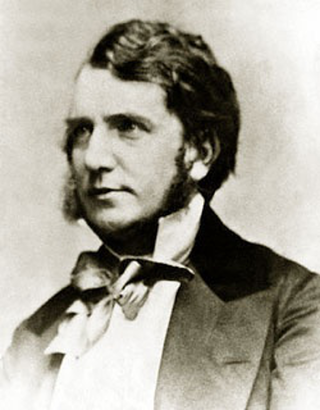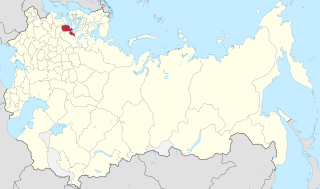Gothic fiction (sometimes referred to as Gothic horror or Gothic romanticism) is a genre of literature that combines elements of both horror fiction and romanticism.
Contents
Gothic fiction (sometimes referred to as Gothic horror or Gothic romanticism) is a genre of literature that combines elements of both horror fiction and romanticism.

Gothic fiction, sometimes called Gothic horror, is a loose literary aesthetic of fear and haunting. The name refers to Gothic architecture of the European Middle Ages, which was characteristic of the settings of early Gothic novels.

Joseph Thomas Sheridan Le Fanu was an Irish writer of Gothic tales, mystery novels, and horror fiction. He was a leading ghost story writer of his time, central to the development of the genre in the Victorian era. M. R. James described Le Fanu as "absolutely in the first rank as a writer of ghost stories". Three of his best-known works are the locked-room mystery Uncle Silas, the lesbian vampire novella Carmilla, and the historical novel The House by the Churchyard.

Catherine Grace Frances Gore, a prolific English novelist and dramatist, was the daughter of a wine merchant from Retford, Nottinghamshire. She became among the best known of the silver fork writers, who depicted gentility and etiquette in the high society of the Regency period.

George Payne Rainsford James, was an English novelist and historical writer, the son of a physician in London. He was for many years British Consul at various places in the United States and on the Continent. He held the honorary office of British Historiographer Royal during the last years of William IV's reign.
This is a timeline of the history of piracy.

Dark Romanticism is a literary sub-genre of Romanticism, reflecting popular fascination with the irrational, the demonic and the grotesque. Often conflated with Gothic fiction, it has shadowed the euphoric Romantic movement ever since its 18th-century beginnings. Edgar Allan Poe is often celebrated as one of the supreme exponents of the tradition. Dark Romanticism focuses on human fallibility, self-destruction, judgement, punishment, as well as the psychological effects of guilt and sin.

The Saint Petersburg Governorate was a province (guberniya) of the Russian Empire, with its capital in Saint Petersburg. The governorate was composed of 44,613 square kilometres (17,225 sq mi) of area and 2,112,033 inhabitants. It was bordered by Estonian and Livonian Governorates to the west, Pskov Governorate to the south, Novgorod Governorate to the east, Olonets Governorate to the northeast, and Vyborg Governorate of the Grand Duchy of Finland to the north. The governorate covered most of the areas of modern Leningrad Oblast and Ida-Viru, Jõgeva, Tartu, Põlva, and Võru counties of Estonia.
The eighteenth-century Gothic novel is a genre of Gothic fiction published between 1764 and roughly 1820, which had the greatest period of popularity in the 1790s. These works originated the term "Gothic" to refer to stories which evoked the sentimental and supernatural qualities of medieval romance with the new genre of the novel. After 1820, the eighteenth-century Gothic novel receded in popularity, largely overtaken by the related genre of historical fiction as pioneered by Walter Scott. The eighteenth-century Gothic was also followed by new genres of Gothic fiction like the Victorian penny dreadful.
{{cite web}}: CS1 maint: archived copy as title (link)